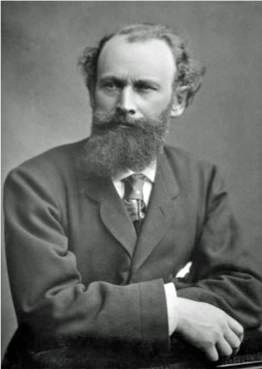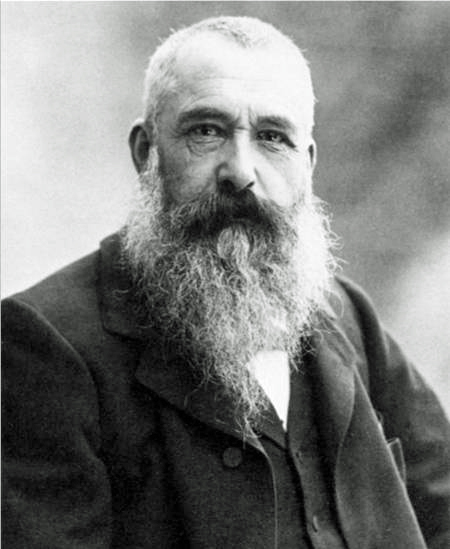 Édouard Manet |
Baudelaire and the Impressionist Revolution |
 Claude Monet |
|
|
Claude Monet (1840-1926)
Self Portrait of Claude Monet (1886)
Claude Monet was born in Paris in 1840 and died in Giverny, France in 1926. He probably was the quintessential Impressionist artist and remained devoted to the principals of this movement throughout his long career. Indeed, it was from one of his pictures, Impression: Sunrise, that the group obtained its name. Although born in Paris, Monet spent his youth in Le Havre, where he first worked as a caricaturist, but soon began to paint landscapes. His technique was unusual in that, instead of painting in a studio, he usually painted out of doors (in plein air). In 1859 he studied in Paris at the Atelier Suisse and formed a friendship with Camille Pissarro. In 1862, he entered the studio of Charles Gleyre in Paris; there he met Auguste Renoir, Alfred Sisley, and Frederic Bazille; they became fast friends and came to be known as the four Musketeers of Impressionism. During the Franco-Prussian War (1870-71) he and Pissarro moved to England; while there, he studied the work of English artists Constable and Turner. He also met the art dealer Durand-Ruel, who was to become one of the great champions of the Impressionists. After the war and the Paris Commune uprising, Monet returned to France and settled Argenteuil, a village on the Seine near Paris. While there, he were painted many works which are now considered to be among the most famous of his career. Also, many other well known Impressionist works were painted there by some of his artistic friends, viz., Edouard Manet, Auguste Renoir and Alfred Sisley. In 1883, Monet made his last move and settled permanently in Giverny, a town that was about 40 miles from Paris. At Giverny, Monet began to prosper. By 1890 he was successful enough to buy a large house at Giverny, which he had previously rented. In 1890-1891, he worked on a series of pictures involving haystacks, portrayed at different times of the day in different kinds of lighting. In the early 1890's, he made several paintings of churches, of which Rouen Cathedral is probably the best known. He traveled widely, visiting London, Venice and Norway. However, as he began to age, many of his paintings were scenes from his celebrated water-garden at Giverny. In particular, his huge paintings of Water-lilies began to dominate his work after 1899. In his last years his eyesight began to fail, but he continued to paint until his death in 1926. He was a hugely prolific artist and many art galleries all over the world have examples of his work.
The Saint-Lazare Train Station (1877)
Claude Monet completed the above oil painting, entitled The Saint-Lazare Train Station, in 1877. It measures 21 X 29 inches and was displayed at the Third Impressionist Exhibition in 1877. Gustave Caillebotte liked the painting so well that he purchased it. In 1894, it became part of the Caillebotte Bequest and was one of the painting accepted by the French government. Today it is on display at the Musee d'Orsay in Paris. Monet painted inside the train station itself, enabling him to directly study the actual lighting and atmosphere, particularly the appearance of steam and smoke. Saint-Lazare was the Parisian terminal of the Chemins de fer de l’Ouest (Western Railways). Buildings constructed during the Baron Haussmann era are shown on the left side of the painting. Industrial buildings provided architects with the opportunity to use new materials and modern construction techniques. Like his fellow painters, Manet and Caillebotte, Monet began to make representations of these urban scenes as Baudelaire had urged painters to do many years before. Monet was particularly interested in the smoke produced by the engine, which he painted pink or blue, thus reflecting the optimism of the time regarding the advantages of technical progress. The left side of the painting depicts the glass roof and steel framework that covered the oldest platform in the station. Monet painted the station as a crossroads in perpetual motion, suggesting its noise and its agitation. In all, he painted eleven different views of the station; these paintings are now dispersed in several museums and private collections throughout the world.
|
|
|